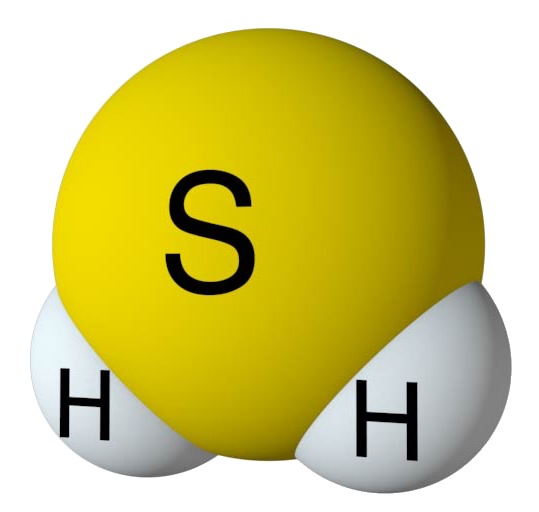Hydrogen Sulfide
Hydrogen Sulfide is a by-product of all petrochemical processes, sewage system, mines and laboratories. It is a highly toxic gas, colorless, heavier than air, flammable, explosive and corrosive. Its odor is not a reliable warning. Up to 5 ppm , it’s presence can be distinguished by odor as a rotten egg.
H2S is heavier than air, therefore it accumulates in low level areas such as excavations, trenches and oil tanks, all are considered traps to the gas.
Hydrogen Sulfide is a combustible gas. It will ignite at 4.6 to 46 % mixture with air, it gives blue flame when ignited. It produces a toxic gas of sulphur dioxide when it burns.
H2S corrosion is a factor in the formation of pyrophoric materials.

Concentration Potential Effect
- 1 PPM - No Significant physical effects. Sense of smell remains intact and can detect a rotten egg odor
- 10 PPM - Eye irritation; 10 PPM is the threshold limit value (TLV)-the greatest concentration safe to breathe without respiratory protection for a normal 8 hour work day, and 40 hour work week. Eye inflammation; Corneal blistering; headache; nausea; cough;
- 100 PPM - Sense of smell becomes ineffectual within 3-15 minutes.
- 500 PPM - Respiratory disturbances cause breathing difficulties; nervous system impairment can result in tremors, numbness in extremities, and convulsions; ability to reason is lost;
- 700 PPM - Respiratory failure; unconsciousness; seizures; Loss of bowel and bladder control; Fatal in 30 minutes.
- 1000 PPM - Immediate unconsciousness; Fatal in a few breaths.

Never ignore any warnings from gas detectors.
Breathing apparatus must be used to control the source of release of gas if detected.
Any affected person shall be removed to safe area and artificial respiration to be given if needed. A doctor to be called in, or take to nearby clinic.
Credit to K.N.P.C SHUAIBA REFINERY
Comments
Post a Comment